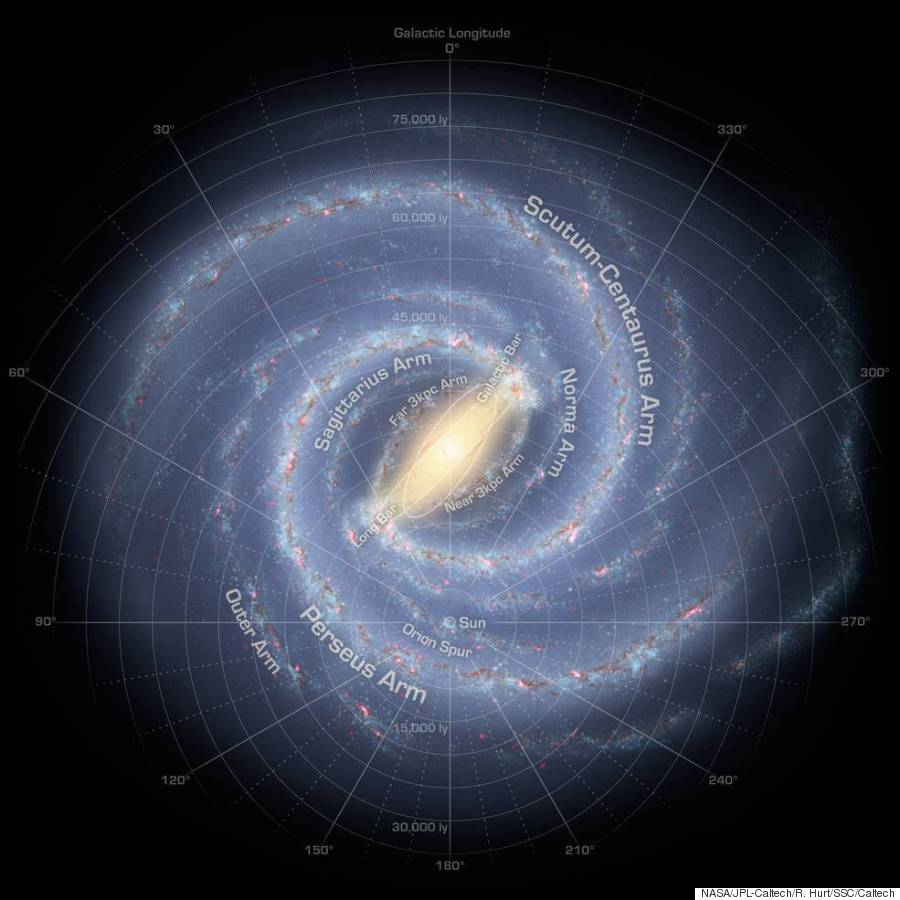What’s it like to draw a map of the vast galaxy in which our solar system is embedded? NASA has likened the task to drawing a map of your house without ever having ventured from your living room. Pretty hard, huh?
But now, with the help of a new mapping method, scientists have created what they’re calling the most accurate map of the Milky Way. It confirms our galaxy is a four-armed spiral and shows in unprecedented detail a series of star clusters at the galaxy’s edge.
This artist’s concept uses old and new data to depict the shape of the Milky Way galaxy. Our solar system is located on the small Orion arm (or Orion Spur) about two-thirds of the way out from the center.
A team of Brazilian astronomers used data from NASA’s Wide-field Infrared Survey Explorer (WISE) space probe to pinpoint clusters containing stars that formed and gathered in the Perseus, Sagittarius, and Outer arms of the Milky Way. By measuring the locations of these clusters, the astronomers were able to trace the shape of the Milky Way’s major arms and weave together a complete image of our galaxy.
“Fundamental parameters like age and distance can in fact be determined for a star cluster more easily and accurate than for a single star or for a nebula. Thus, embedded cluster location can be used to trace the Milky Way’s spiral structure,” Denilso Camargo, the Federal University of Rio Grande do Sul astronomer who led the star cluster research, told The Huffington Post in an email. “The discovery of such large numbers of embedded clusters are improving our understanding about the Milky Way’s structure and star formation.”
Source: New Milky Way Galaxy Map Is The Most Accurate Ever Created








I would say that other Solar Systems with humanoids like us and realities similar to ours, are situated in the “Galactic Goldilocks zone”, which looks like some sort of a concentric torus-shaped belt, in which our Solar System resides.